Painting the flesh
Artists' Techniques
Bening painted flesh tones with complex mixtures, intentionally varied to suit the character and specific situation of the individuals depicted. In line with 16th-century practices, he used flesh tones to suggest the protagonists’ temperament – choleric in the case of the bad thief (MS 294a), melancholic in the case of the Damned (MS 294d). Bening also varied his treatment of flesh tones to distinguish between the living and the dead. The two Crucifixion scenes (MSS 294a, 3-1996) provide a study in ‘life colour.’
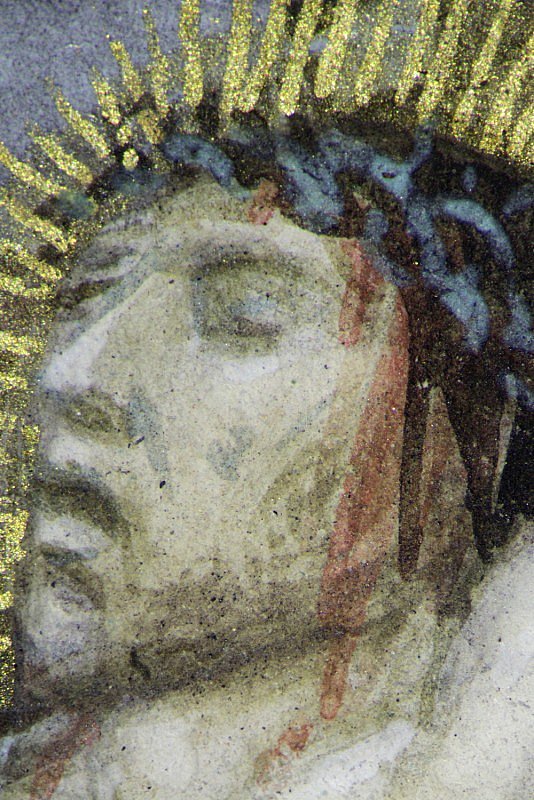
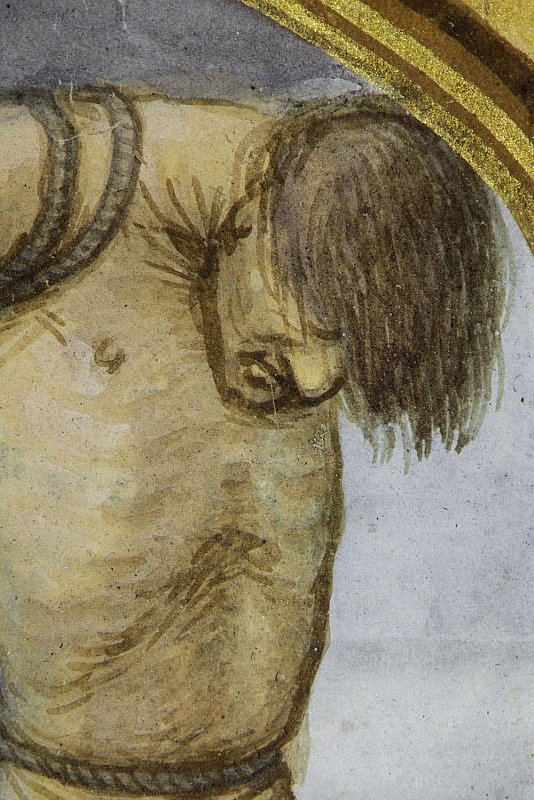
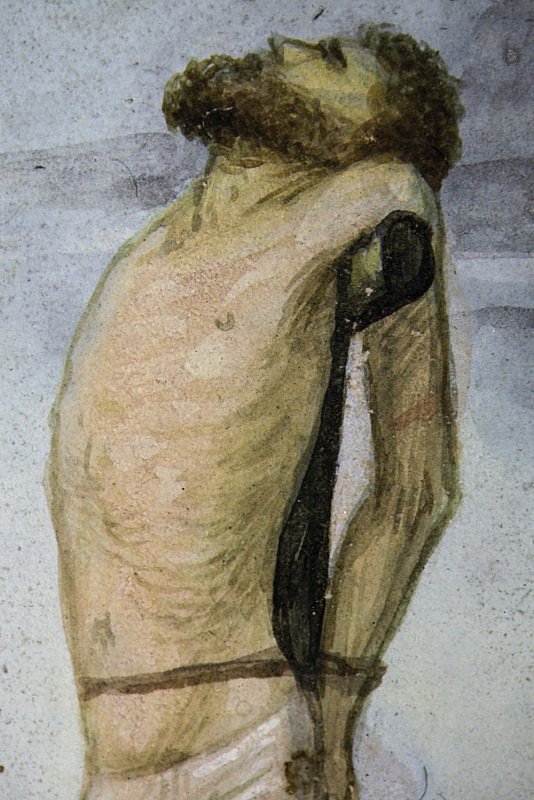
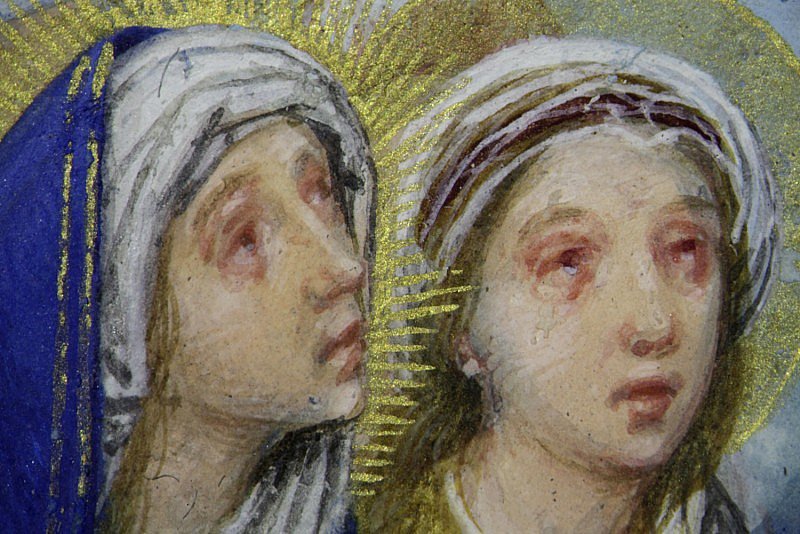
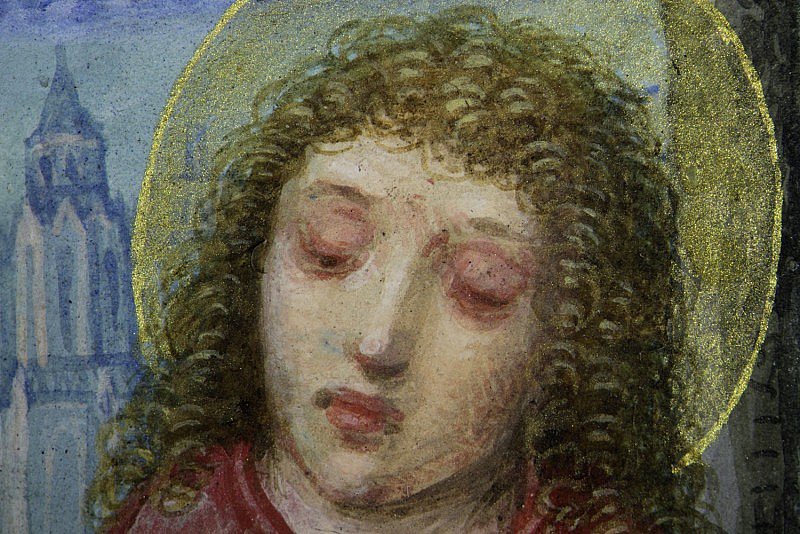
Crucifixion
This poignant scene shows the Virgin Mary, her companion and Saint John overwhelmed by grief at the sight of Christ’s suffering. Clustered near the base of the cross they keep vigil, with their eyes red and swollen from crying. The unrepentant thief on Christ’s left, having scorned the Saviour, has turned away. The good thief, aligned with Christ, his head strenuously lifted for a final gaze at the sky, embodies the hope for salvation.
Bening intentionally varied the flesh tones of the three crucified figures. Christ, pale and chalky in appearance, was painted with lead white and modelled with brown ochre and azurite blue in the grey shadows of his body and face (hotspot 1). The thief turned away from Christ was rendered with a mixture rich in yellow and brown ochres and azurite blue, perhaps his choleric flesh colour symbolically referencing his betrayal (hotspot 2). By contrast, the good thief is painted in a similar shade to that of Christ, though with slightly more vermilion red, with indigo blue in the shadows (hotspot 3). The subtle distinction in the colours used to paint the two thieves associates one with the Saved and the other with the Damned.